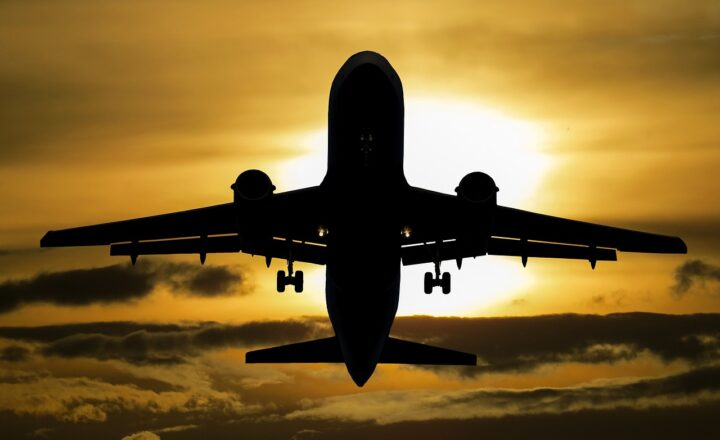How Gliders Operate Without Engines and Why They’re Popular in Sport Flying
November 11, 2024

Gliders, often known as sailplanes, are an engineering marvel that fascinates aviation enthusiasts worldwide. Unlike conventional aircraft, which rely on engines for lift and propulsion, gliders utilize the power of aerodynamics to soar gracefully through the skies. In this article, we will explore the operating principles of gliders, their unique design features, and the reasons for their popularity in the sport flying community.
1. The Science Behind Gliding
To understand how gliders operate without engines, it’s crucial to dive into the fundamental principles of aerodynamics.
Lift and Drag: Lift is created as air flows over the surface of the wings. The shape of a glider’s wing, known as an airfoil, is designed to maximize lift while minimizing drag—a force that opposes the forward motion of the aircraft. The balance between lift and drag is essential for gliders to maintain altitude and glide efficiently.
Bernoulli’s Principle: According to Bernoulli’s principle, faster-moving air creates lower pressure. As the glider moves, air travels more quickly over the curved upper surface of the wing than beneath it, resulting in a pressure difference that generates lift.
Glide Ratio: The glide ratio is the key performance metric for a glider, representing the distance it can travel horizontally compared to the altitude lost. High-performance gliders can achieve ratios of up to 50:1, meaning they can cover 50 meters forward for every meter of altitude lost.
2. The Anatomy of a Glider
Gliders are carefully designed to enhance their gliding capabilities. Key components include:
Wings: Glider wings are long and slender, designed to maximize lift while reducing drag. The aspect ratio (the ratio of the wingspan to the mean wing chord) is generally much higher than that of powered aircraft.
Fuselage: This is the main body of the glider, streamlined to minimize drag. Aero-dynamically efficient designs are crucial for maintaining speed and altitude during a glide.
Control Surfaces: Gliders have ailerons, elevators, and rudders that allow pilots to control their movements. Ailerons control roll; elevators control pitch; and the rudder manages yaw, aiding in directional changes and maneuverability.
Ballast: Pilots often add ballast (weight) to gliders to improve performance under specific conditions. By adjusting the weight, pilots can optimize their glider’s performance depending on the flying environment.
3. How Gliders Take Off
Gliders require an initial boost to reach altitude, as they have no engines. Several methods are used to launch gliders:
Tow Plane: The most common method is using a powered aircraft, known as a tow plane, which tows the glider to a desired altitude before releasing it. This method is efficient and popular among clubs.
Winch Launching: In this method, a ground-based winch pulls a long cable connected to the glider, rapidly accelerating it to takeoff speed. This technique provides a quick and efficient launch in smaller airfields.
Aerotow: Similar to tow planes, some gliders can be equipped to tow other gliders into the air, allowing experienced pilots to assist novices in their training.
4. How Gliders Sustain Flight
Once airborne, gliders utilize natural resources to sustain flight:
Thermals: Rising columns of warm air create thermals, which gliders can circle in to gain altitude. Pilots skillfully navigate in and out of thermals to extend their flight time.
Ridge Lift: This occurs when the wind hits a mountain or ridge and is forced upwards. Gliders can ride this upward airflow, allowing for prolonged flights.
Wave Lift: Wave lift occurs downwind of mountain ranges, where air moves in waves. Experienced pilots can utilize this lift to gain significant altitude, sometimes to altitudes of over 15,000 feet.
5. Popularity of Gliders in Sport Flying
Gliders have garnered immense popularity within the sport flying community for several compelling reasons:
Freedom of Flight: Pilots often describe flying gliders as a liberating experience. Soaring without the engine’s noise creates a serene environment that allows for a unique connection with nature.
Skill Development: Flying a glider requires a deep understanding of aerodynamics, weather systems, and navigation. Pilots must develop excellent skills in critical thinking and quick decision-making, which enrich the flying experience.
Community and Camaraderie: The gliding community is warm and welcoming, offering opportunities for camaraderie among pilots. Clubs and groups encourage sharing experiences, organizing competitions, and fostering a sense of belonging.
Environmental Considerations: As gliders are engine-free, they are quieter and emit no pollutants, attracting environmentally-conscious individuals who admire nature and seek sustainable practices in aviation.
6. Conclusion
With their remarkable design and reliance on natural forces, gliders offer a one-of-a-kind flying experience. The thrill of harnessing the wind, mastering the art of soaring, and joining a vibrant community of enthusiasts makes gliding increasingly popular. As the sport evolves, more individuals are discovering the serenity, challenge, and adventure that glider flying has to offer.
If you’re interested in exploring a fascinating aviation experience, consider taking a glider flight and witnessing the magic of flight without engines first-hand. Join the soaring community and embrace the tranquility and excitement that comes with gliding.






